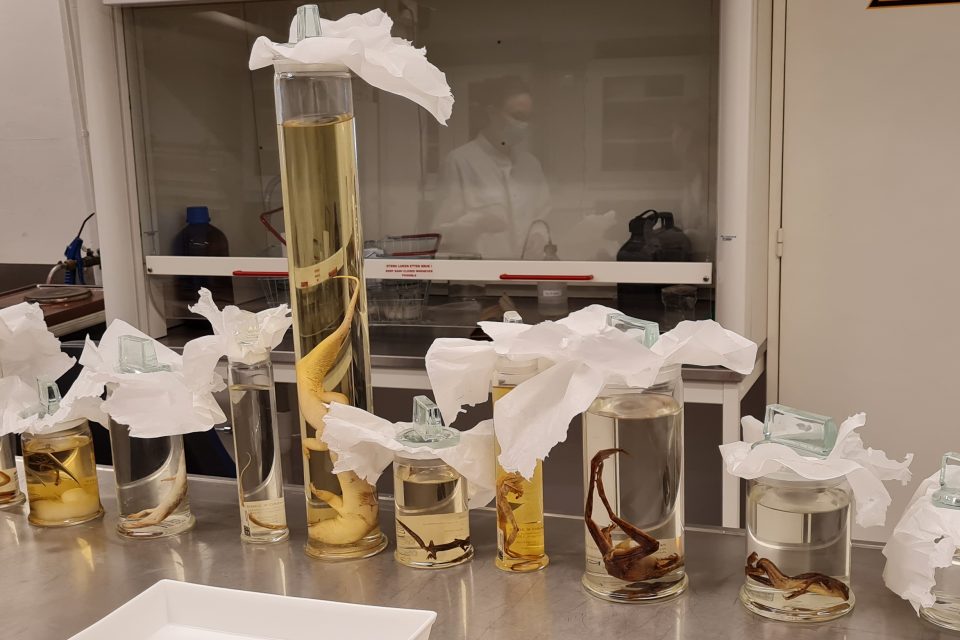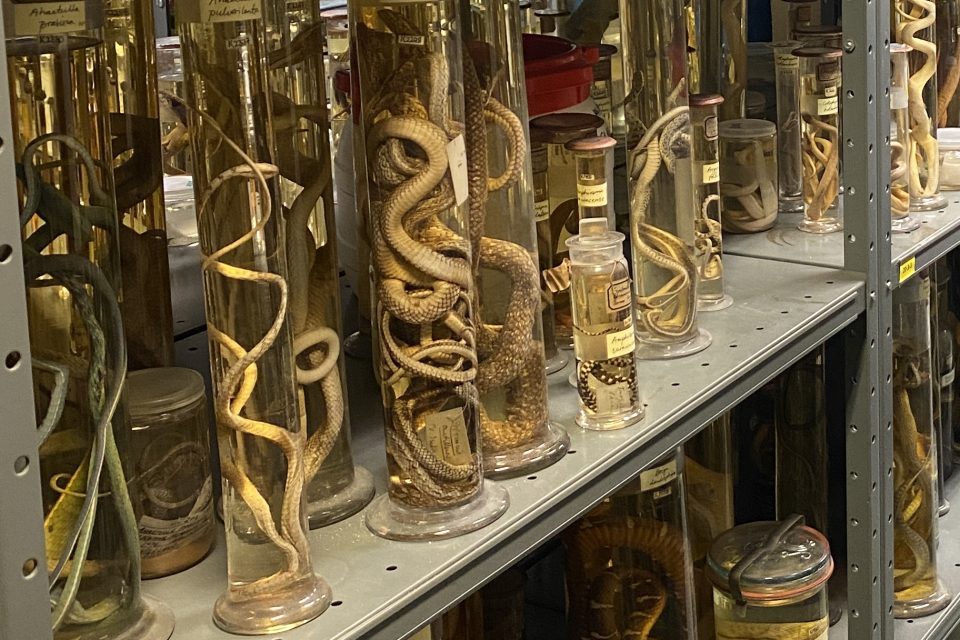Here we blog about our research on working with DNA from museum samples done by different members of the group and all around collections.
Category: Museomics

Group of the month: Family Caprellidae
Spooky scary skeleton shrimp, send shivers down your spine, their appearance will shock your soul, but certainly don’t seal your doom tonight! Family Caprellidea, otherwise known as skeleton shrimp, are small marine arthropods that are found world-wide. Using their specialized ‘feet’, called pereopods, these slender, segmented invertebrates cling […]

Animal of the month: Cystophora cristata
By Pia Merete Eriksen and Rita M. Austin I think most of us conceptualize a seal as a comical or cute animal, darting through open waters – I don’t think many of us envisage blood-red balloons and bulging sacs, specialized for a ritual of dominance and mating. Enter, […]

Catching up! Door 22 – Progresses and challenges during 2021
Everyone has missed a day of ticking off advent as some point! Making today a two-for-one post day! Enjoy! By Alberto Valero-Gracia This year has been a bit peculiar for most of us. However, as with most of our colleagues at the NHM, the FEZ group has always […]

Door 21 – Persistent considerations for molecular analyses of museum specimens
Many factors come into play when making decisions about using museum specimens, especially for molecular applications. As a museum scientist that utilizes molecular methodologies, I am constantly conducting experiments in my mind to try to run through how each step and/or technique will (or won’t) get me to […]

Door 13: Christmas Excitement at the Museum
“On the thirteenth day of Christmas my true love gave to me”…an unbridled curiosity of organismal diversity and their relationships, historical contexts, and the natural world that has directly informed my career. Me too! While my fascination of the natural world isn’t directly related to the holidays, I […]

Door 5: Modern DNA Sequencing Meets Oslo Natural History Museum Wet Collections: Testing the Impact of Age and Formalin
Pia Merete Eriksen, Rita M. Austin In June 2021, I, Pia M Eriksen, conducted a research project under the guidance of Rita M Austin to sequence herptile type specimen DNA using in-house sequencing techniques, supported by Oslo Natural History Museum and UiO: Life Sciences. Now, 5 months later, […]

Biodiversity research in the Genomics era
Sequencing technology has changed in research in biology tremendously and probably much more than any other technology before. The development from radioactivity-based to nowadays single-molecule real-time sequencing of tens of thousands of base pairs in a single go in the last three decades is on par with the […]

Old Specimens, New Scientist: A Student’s Account of Sequencing Historic Herptile Type Specimens
The Covid-19 shutdown and restrictions halted any opportunities to learn about and contribute to on-going research at the University of Oslo (UiO). Because I’m (Pia M. Eriksen; Figure 1) considering a master’s degree in biological sciences, I have been planning and looking for ways to engage in biological […]

An initial foray into scientific research: Meet the new undergraduate research student at FEZ
Joining the FEZ group as part of the University of Oslo’s (UiO) Summer Research Program, Pia M. Eriksen is a Bachelor of Biosciences student taking part in an on-going museomics (museum collection genetic studies) project. Working alongside project leader, Rita M. Austin, Pia will contribute to the exploration […]

New Paper Exploring the Surprising Evolutionary History of Our Oral Bacteria*
Living in and on our bodies are trillions of microbial cells belonging to thousands of bacterial species – our microbiome. These microbes play key roles in human health, but little is known about their evolution. Here we investigated the evolutionary history of the hominid oral microbiome by analyzing […]